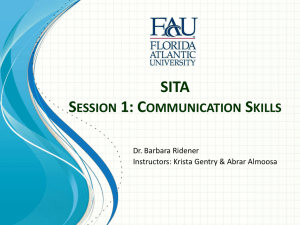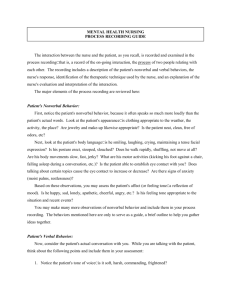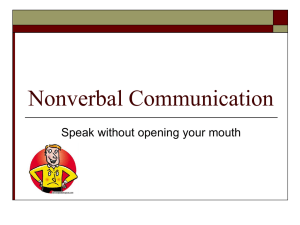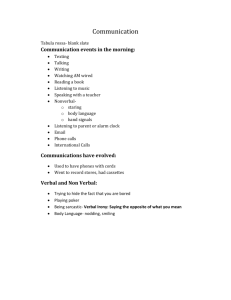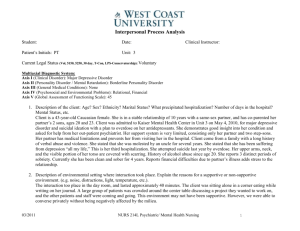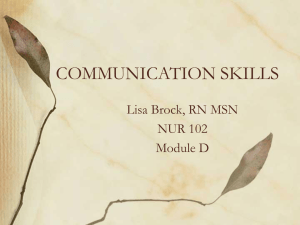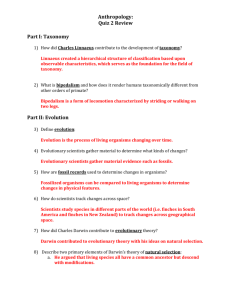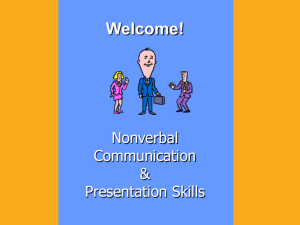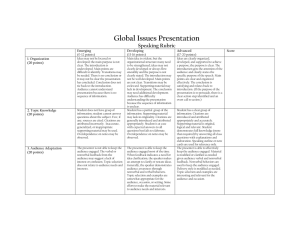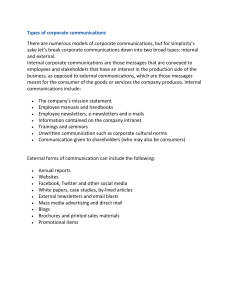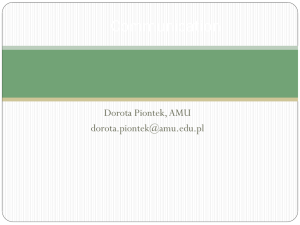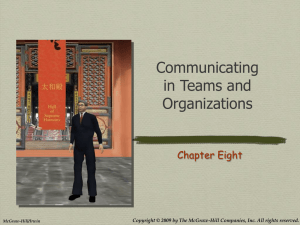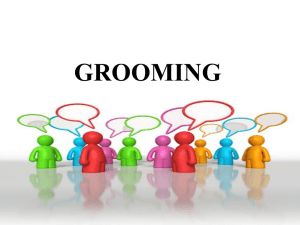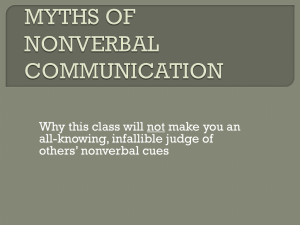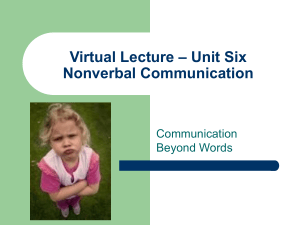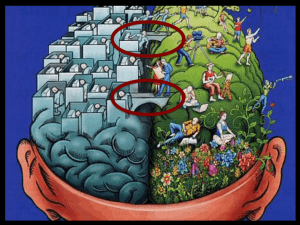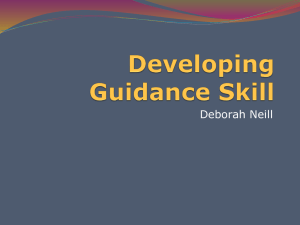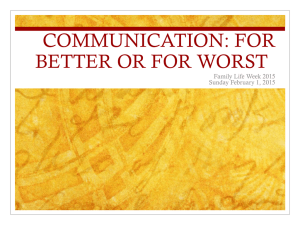April 2014 Power Hour
advertisement
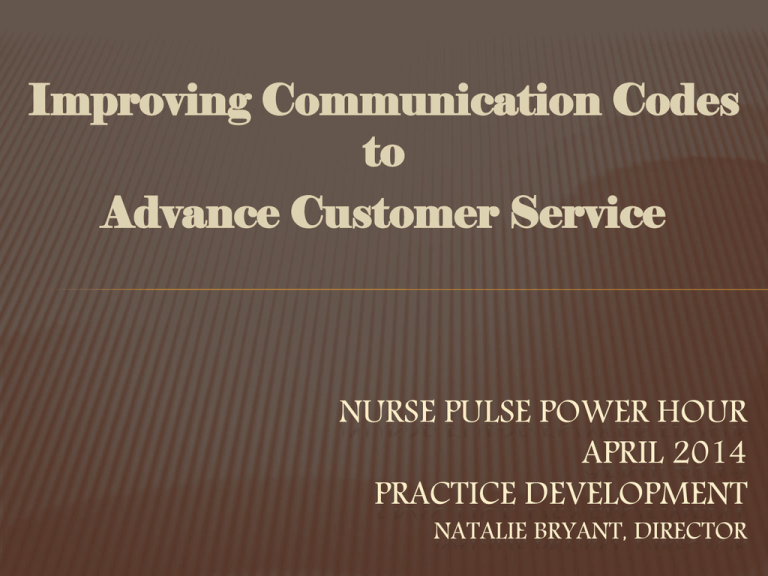
Improving Communication Codes to Advance Customer Service NURSE PULSE POWER HOUR APRIL 2014 PRACTICE DEVELOPMENT NATALIE BRYANT, DIRECTOR PURPOSE OF SERVICE Create Mutually Beneficial Relationships Moment of Truth – Any encounter a customer/patient/co-worker has with you, YOU can make or break the relationship. WE can make a difference! PRESS GANEY ASSESSMENT CATEGORIES Moving through Clinic Informed of delays Wait Time Nurse/Assistant Friendly and Courteous Showed Concern Communicates Name PRESS GANEY ASSESSMENT CATEGORIES Personal How Issues well staff protects safety • Hand washing, wearing gloves Sensitivity to Needs Concern for patient’s privacy Cleanliness of practice PRESS GANEY ASSESSMENT CATEGORIES Overall Staff Assessment worked together Likelihood of recommending clinic Degree to which patient was informed of survey CLINICIAN AND GROUP CONSUMER ASSESSMENTS OF HEALTH CARE PROVIDERS AND SYSTEMS SURVEY - CGCAHPS Access Get to Care answer same day/as needed See Provider within 15 minutes CGCAHPS Provider (maybe nurse could make a difference) Explain things in a way the patient could understand Listens carefully to patient Discuss health questions/concerns Knew important medical history Show respect Spend enough time with patient Follow up with lab results EFFECTIVE COMMUNICATION Communication is the process of transferring thoughts, ideas, and feelings from one person to another in commonly understandable ways. COMMUNICATION FACTS Communication is unavoidable. Communication is irreversible. The only way you can be sure your message has been received is through feedback. The most important message is the message that’s received. First Impression is made in first 7 seconds! STRENGTH OF CODES MEHRABIAN REPORT Professor Emeritus, UCLA Albert Mehrabian – 1960’s 7, 38, 55 Rule 7% Verbal 38% Vocal 55% Nonverbal IMPROVING VERBAL USAGE Communicates an idea Triangle of Meaning Communicator Sender/Receiver Symbol Referent IMPROVING VERBAL USAGE Simple Words – easy to follow Do not be too vague; Give enough details Avoid medical Jargon/Slang without explaining the terminology Patient should be able to paraphrase Avoid referring to a patient as a “condition” Remember, patients can hear comments from inside the exam room Avoid misunderstandings IMPROVING VERBAL USAGE Tell patient WHAT you are doing before acting Eliminates the surprise/shock factor Self Pay patients should be informed of procedure cost BEFORE administering. Gain their permission. Avoid Filler Statements ums/uhs/stuff/things/you know/like Makes you appear unorganized, confused, uninformed, unintelligent IMPROVING VOCAL USAGE Poor Articulation/Pronunciation Hard to understand - mumbling – lazy speakers Too Fast Monotone quality Sounds apathetic/wrote memorization going through the motions Variety + Sounds interested, happy, empathetic & sincere pitch, rate, volume, range, rhythm Fluent – sounds intelligent/knowledgeable IMPROVING NONVERBAL USAGE Face & Eyes #1 Communicating Tool Expressions – empathy Smile or Concern Incredibly Friendly Sincere Direct Eye Contact – RESPECT IMPROVING NONVERBAL USAGE Body & Appearance Well groomed & clean Professional uniform Positive Posture No distracting body art or piercings Stay on task Cell phone put away – only use during breaks/lunch Patient ALWAYS first IMPROVING NONVERBAL USAGE What impacts personal bubbles??? Proxemics – personal distance Professional distance 4 feet to 12 feet When closer, depending on task, may need a witness in room Tactilics Tell – touching behaviors what you are doing – ask permission Read their nonverbal cues IMPROVING NONVERBAL USAGE Chronemics-study of time usage Perception that we Value time of others Communicate with PSS on time More impressive if YOU inform patient in waiting room of status Be observant of patients willingness to wait Keep patient informed of wait; do not leave them for long periods of time in the waiting room without face to face contact SCRIPTING - GREETING Good Morning/Afternoon Welcome to TTP My name is ______________ (tell them where you are going…) Do not walk off and leave them behind Engage conversation as walking SCRIPTING – HANDBOOK FYI in case someone asks…. “Our Patient Handbook is posted on our website and it gives you important information about our clinic and your Rights and Responsibilities. This card shows you how to access the handbook on our website. If you do not have access to the internet, you may pick up a handbook at the Information Desk located at the main entrance of the Health Sciences Center or the Medical Pavilion.” PSS SCRIPTING - SURVEY “Mr/Ms _______you may be chosen at random to receive a survey in the mail regarding your overall experience during today’s visit and we would really appreciate it if you would complete the survey and return it. Our goal is to be one of the best facilities in the country so in order to do that we must receive the highest scores on everything! If you do not think we gave you the best service you could possibly receive, please let us know today what we can do to earn those top marks.” NURSE SCRIPTING - SURVEY “Mr/Ms _______our goal is to be one of the best facilities in the country so in order to do that we must receive the highest scores on everything! If you do not think we gave you the best service you could possibly receive, please let me know today what I can do to earn those top marks.” SCRIPTING – SEEKING FEEDBACK “Our Patient Services Department is seeking feedback from patients like YOU on how we can better serve YOU. If you have time today, drop by their office in the Medical Pavilion near the Information Desk or just give them a call.” Office 1010A 743 – 2669 BE ALL THAT YOU CAN BE!



